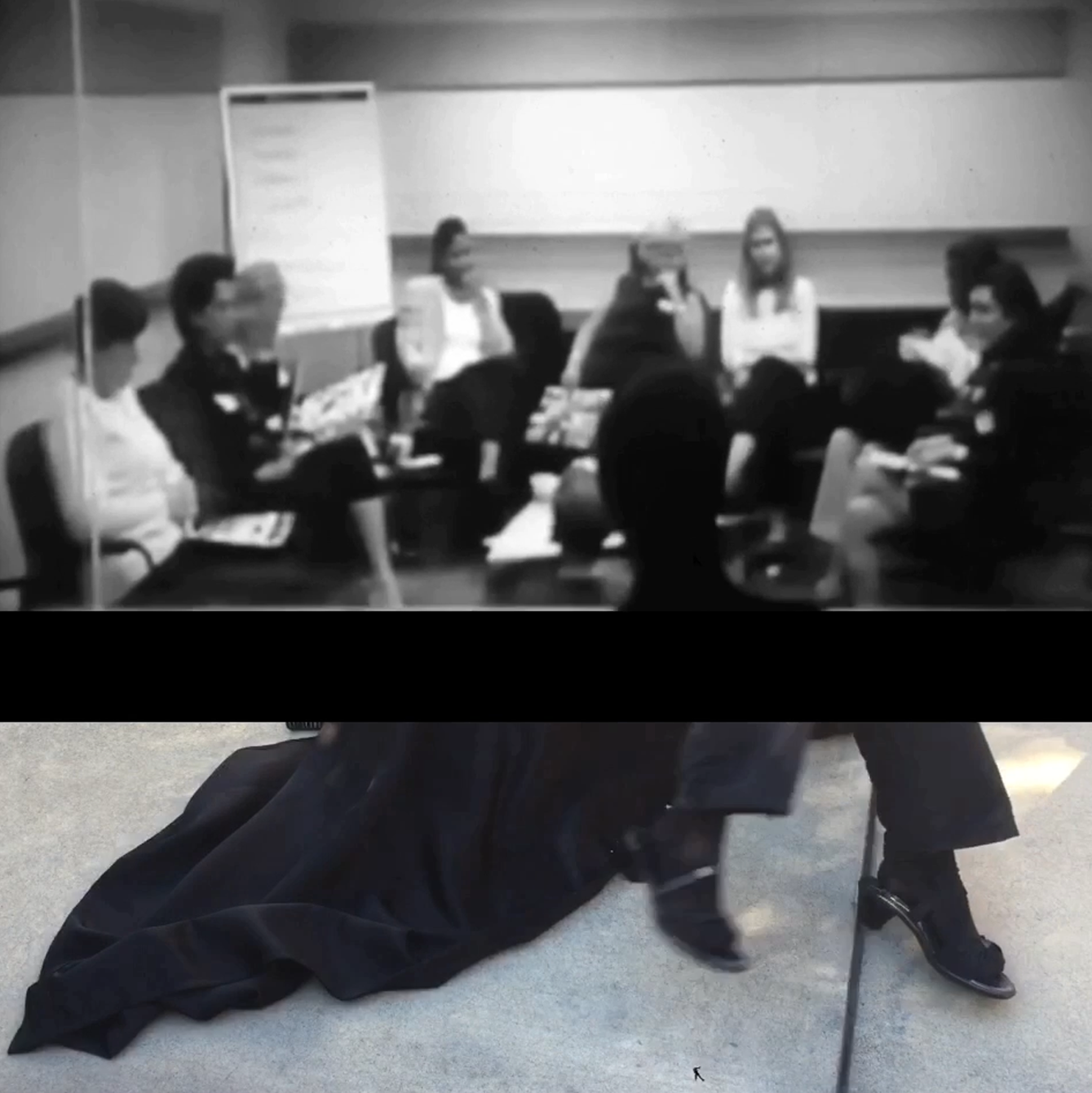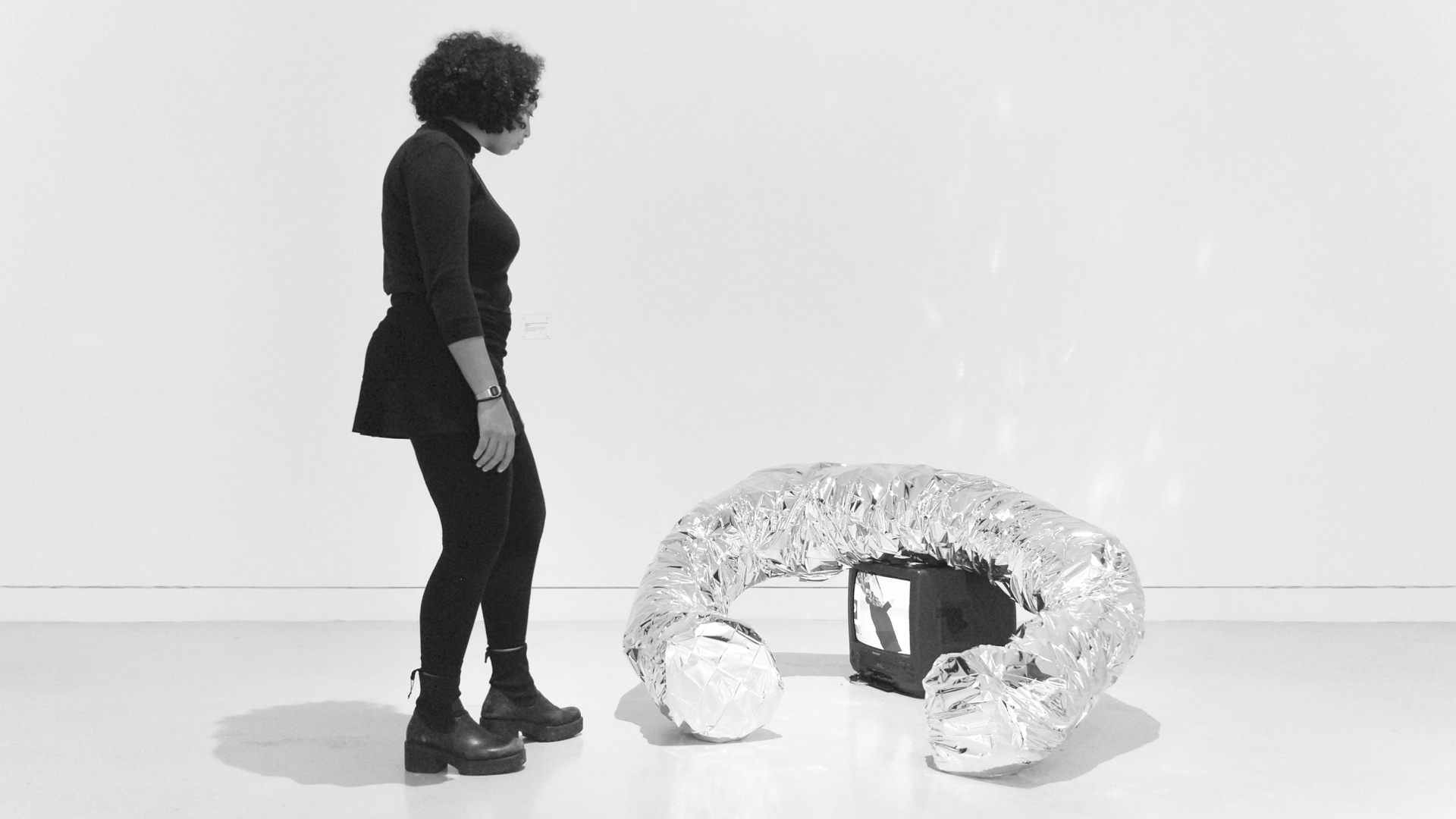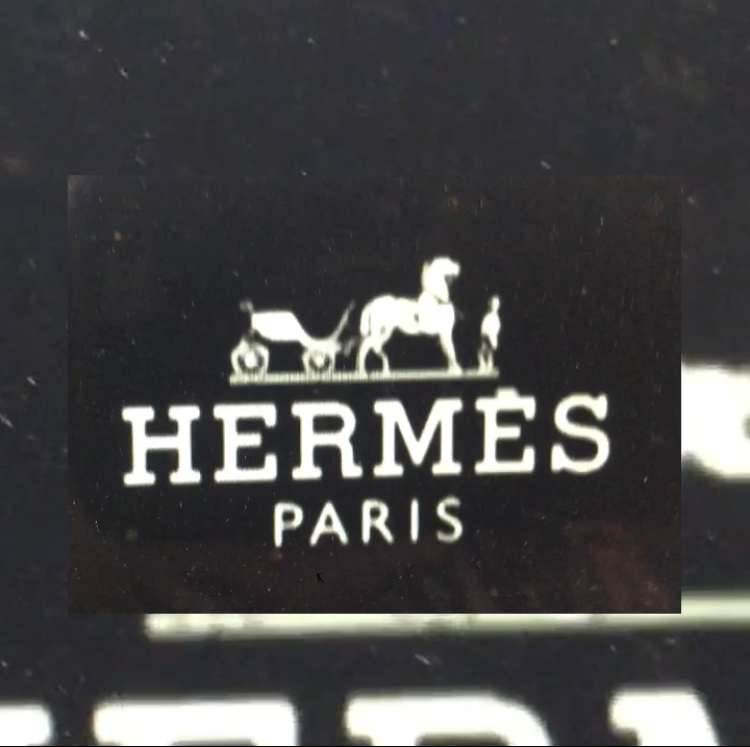$ellibate
$ellibate, single-channel video with sound, 1:38, 2018.
In this short video, a desperate consumer calls Hermès to ask about an in store experience promised in an ad campaign. Defeated by their own psychic attachments to becoming ppart of the group of models in the ad, the consumer commits to “$ellibacy,” vowing never to be sold to again. While working as an advertising art director, friedman became fascinated by the tendency of focus group participants to provide unrequested emotional detail, often refusing to use numerical ranking systems by insisting on using language and gesture. Alongside the narrative, which includes crank calls to Hermès, the video explores missed group psychoanalytic opportunities in the focus group and features found focus group footage. friedman’s collaborative performance with Kai Simone Daniels at PAM Residencies in Los Angeles accompanied the project, and the video installation showed in the group exhibition, TAM FORUM, at Torrance Art Museum.


Recordings of crank calls to Hermès stores
Originally performed at PAM Residencies, Los Angeles, in November 2018, $ellibate, is a collaboration with multimedia and performance artist, Kai Simone Daniels, as co-choreographer and performer, interdisciplinary sculptor, Philip Košćak, multidisciplinary artist, miranda j friedman, and sound artist, Joshua Oduga.
A multi-iteration work examining how consumers attempt to fulfill unconscious attachments to social roles, living by images via the maintenance of consumerist behavior. Recordings of crank calls to Hermès stores are mixed with video and music in which looping femme voices represent consumerism as a track on which target demographics are susceptible to being stuck. The piece explores through comedy how buyers can comfortably slide into a futile cycle to replace all other goals and ambitions with the pursuit to mirror societal ideals.
![]()
The title, $ellibate, is a suggestion to the ineffective material objects and hopeless consumer to just give up. The piece offers an alternative to the cycle of trying to become something by buying. $ellibacy is the state of abstinence from being sold to. In the video, the caller’s inability to reach a sales specialist and the desired silk scarves, in addition to interruptions in the audio, exacerbate the struggle to reach the ideal.
Originally performed at PAM Residencies, Los Angeles, in November 2018, $ellibate, is a collaboration with multimedia and performance artist, Kai Simone Daniels, as co-choreographer and performer, interdisciplinary sculptor, Philip Košćak, multidisciplinary artist, miranda j friedman, and sound artist, Joshua Oduga.
A multi-iteration work examining how consumers attempt to fulfill unconscious attachments to social roles, living by images via the maintenance of consumerist behavior. Recordings of crank calls to Hermès stores are mixed with video and music in which looping femme voices represent consumerism as a track on which target demographics are susceptible to being stuck. The piece explores through comedy how buyers can comfortably slide into a futile cycle to replace all other goals and ambitions with the pursuit to mirror societal ideals.

The title, $ellibate, is a suggestion to the ineffective material objects and hopeless consumer to just give up. The piece offers an alternative to the cycle of trying to become something by buying. $ellibacy is the state of abstinence from being sold to. In the video, the caller’s inability to reach a sales specialist and the desired silk scarves, in addition to interruptions in the audio, exacerbate the struggle to reach the ideal.

$ellibate (installation view at Torrance Art Museum, Torrance, CA), video, mixed media sculpture, 2018.
Similar to friedman’s previous work, $ellibate implements participatory research and collaboration, in which the artist creates with and directs a team of artists as experts in each of their respective media. In the performance at PAM Residencies, Los Angeles, in November 2018, Daniels and friedman initiate rudimentary choreography. Movement is humorously cued by audio and the flashing of visual cues in the video, which are designed to look like Instagram call-to-action buttons, i.e. “Buy Now.” As in Friedman’s previous work, the simple choreography and basic cues symbolize the ease and willingness one can comfortably enact what they are told to do by patriarchy, in this case, in the form of capitalism.
![]()

A video collage is projected behind the performers, Kai Simone Daniels and miranda j friedman. The video includes consumer profiles used by ad agencies, found Hermès ads and 1990s runway footage, as well as videos I made parodying the latter using an iPhone. The parody depicts a consumer’s fruitless endeavor to recreate the world in the advertisement. Also in the set design is an eight-foot-tall rectangular mylar structure by Philip Košćak, who performed in the PAM iteration, operating the hair-like strands from a concealed space within the structure. From the structure, giant abstract strands of hair made of black plastic trash bags are constantly growing from follicles.
![]()
The arduousness of the performers’ impulse to continually pluck the regrowth in their maintenance of the hair, as well as the disrupted audio, increase the difficulty to reach Hermès. An original audio score includes calls to Hermés set to music created by Joshua Oduga with a synthesizer. Interruptions take the form of found music, often of fammes covering cis male-written lyrics and of looping moaning femme vocals, and audiobook clips from Lorrie Moore’s “A Gate at the Stairs.” The excerpt from Moore's novel is a first person narrative about a woman buying a reading lamp from a catalogue based on the photo of a man and his "model wife," and her attempt to bring the image into her own reality is an example of buyer futility. The clip comedically concludes with, "The lamplight was as bright as the noon sun, and as I studied next to him, Reynaldo could not sleep. ... I turned off the light and fell behind in my reading."

The arduousness of the performers’ impulse to continually pluck the regrowth in their maintenance of the hair, as well as the disrupted audio, increase the difficulty to reach Hermès. An original audio score includes calls to Hermés set to music created by Joshua Oduga with a synthesizer. Interruptions take the form of found music, often of fammes covering cis male-written lyrics and of looping moaning femme vocals, and audiobook clips from Lorrie Moore’s “A Gate at the Stairs.” The excerpt from Moore's novel is a first person narrative about a woman buying a reading lamp from a catalogue based on the photo of a man and his "model wife," and her attempt to bring the image into her own reality is an example of buyer futility. The clip comedically concludes with, "The lamplight was as bright as the noon sun, and as I studied next to him, Reynaldo could not sleep. ... I turned off the light and fell behind in my reading."